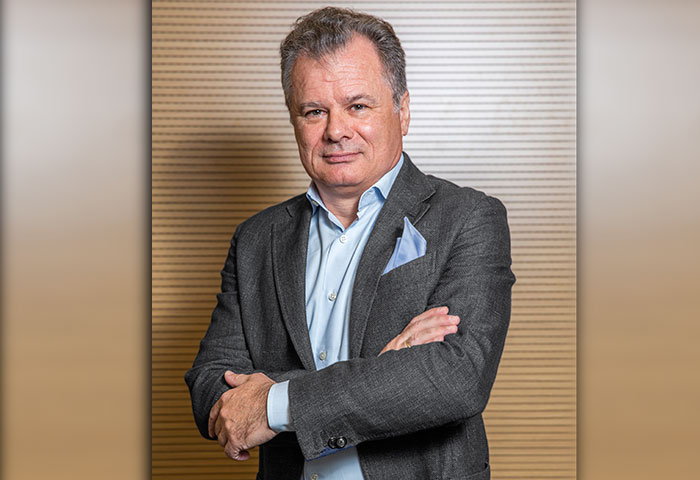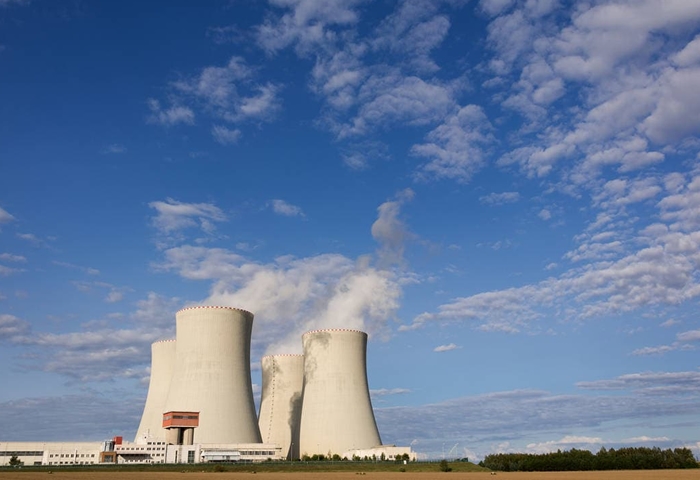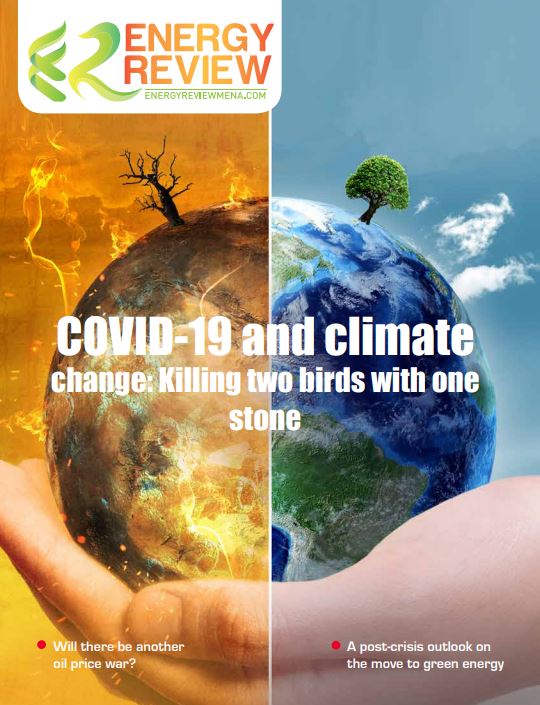When it comes to the right energy mix, there is no ‘one size fits all’, says Massimo Gallizioli
GE Steam Power puts a century of expertise to work every day, with local teams in more than 70 countries around the world. As the world’s need for accessible power grows, coal power will continue to be a vital way to meet this demand. However, to limit emissions, it is essential to add new energy sources to the mix.
In an exclusive interview with Energy Review MENA, Massimo Gallizioli, CEO of GE Steam Power in MENAT shares with us some insights regarding steam power technology, renewables, and sustainability.
Where can we get the most use of the steam power technology, what value does it add to the energy industry, and how efficient is a steam engine?
In most countries today, meeting the demand for affordable, reliable, sustainable and accessible power requires a balanced energy mix including renewables as well as traditional sources such as gas, coal and nuclear. Steam technology enables you to generate electricity from a great variety of traditional and renewable fuel sources, such as heavy fuel oil (HFO), coal, gas, nuclear, solar, biomass, waste, and others. So steam power gives you great flexibility in the choice of your fuels. In the Middle East and North Africa, most of these fuels play a significant role, depending on each country’s energy strategy.
The efficiency of a steam power plant depends on the fuel and the steam power technology used, including the boiler, if needed. Taking coal as an example, the world’s most efficient coal power plant, RDK8 in Karlsruhe, Germany, is reaching 47.5% efficiency, significantly higher than the global average of 34%. It is applying GE’s ultra-supercritical (USC) technology to achieve this record-breaking efficiency.
Everyone today is trying to reach for different sources of renewable energy. In your opinion, what’s the right individual energy mix for each country in the region? What’s the right share of solar, wind, gas, coal, and nuclear?
When it comes to the right energy mix, there is no ‘one size fits all’; each country needs to find its own individual mix. Countries in the Middle East have embarked on a journey to diversify their energy sources for greater energy security and sustainability. Depending on factors such as available fuels – both fossil and renewable – many countries are looking at adding wind, solar, coal and nuclear to their mix, aiming at lower dependence on oil and gas, and meeting national sustainability goals in response to climate change.
Some countries like the UAE have been proceeding fast and have set standards for the region and even globally, with a clear energy strategy that defines targets for the energy mix. For the UAE, that is 44% clean energy, 38% gas, 12% coal, and 6% nuclear. The UAE decided on this strategy after a thorough analysis of availability, accessibility and economic viability. For example, as part of the clean energy part, the UAE is adding large capacity of solar power because the required resources – sunshine and land space – are abundantly available. Wind power on the other side is more difficult because wind conditions in the UAE are not ideal for large scale generation. Countries like Oman or Saudi Arabia do have suitable conditions, which is why they are planning to add wind power to their energy mix.
How is GE meeting and supporting the region’s sustainability strategies while enabling economic growth?
GE is in a unique position to support the region’s energy transition because we are fuel agnostic – GE works across the entire energy value chain. We are today supporting our customers in managing the energy transition by making their existing fleet more efficient and flexible, and adding the additional capacity with the most advanced technology for the fuel sources they select to best meet their energy targets.
Our upgrades and digital solutions are helping customers to make their gas power plants more efficient to use less fuel for the same amount of electricity, and we have brought the world’s most efficient gas turbine, the HA, to the region. GE has delivered Saudi Arabia’s first ever wind turbines, and in Oman we have built the GCC’s first large-scale wind farm. GE is providing the Arabelle steam turbine technology for Egypt’s El Dabaa nuclear plant to deliver 4,800 MW of carbon-free power. In Dubai, GE is equipping the region’s largest solar power plant with our inverter technology, and we are providing our ultra-supercritical steam power technology and emissions controls technology for the region’s first coal power plant. As mentioned, this USC technology allows efficiency of up to 47.5%, more than 13% higher than the global average. Every percentage point of efficiency makes a difference. In a coal-fired power plant, a one percentage point improvement in efficiency means a two-percentage reduction in CO2 emissions.
In addition to driving efficiency and lower emissions with existing and new power plants, we are also supporting the region’s utilities with smart grid solutions to manage intermittent and decentralized sources.
It is a fact that everyone today is reaching for new green energy sources. How much did the adoption of renewables rise in the past few years till today and how are you able to ensure 24/7 power supply despite intermittency?
Countries in the Middle East have added sustainability targets to their national agendas, and they have signed the Paris agreement to address climate change. As a result, we are seeing wind and solar power being added in many countries, in varying quantities according to each country’s individual energy mix.
To keep the lights on 24/7 while adding intermittent sources, a couple of criteria need to be met.
First, you need dependable power generation capacity that can deliver electricity when the wind is not blowing, or the sun is not shining. So, the more renewables are entering the grid, the more you need traditional power sources like gas, coal and nuclear to balance.
Second, that dependable capacity will play a different role; instead of providing 100% baseload, traditional fuel sources today need to be flexible to kick in when renewable sources drop, so fast start-up times are becoming more and more critical. GE has been investing large parts of its R&D budget to develop flexibility solutions for gas and steam power plants.
Finally, you need to make sure that your grid can handle the fluctuation, so smart grid solutions as provided by GE are critical to ensure uninterrupted power supply. We also see a renewed interest in synchronous condensers that produce or absorb reactive power to stabilize the grid. In addition, battery storage like GE’s Reservoir solution can play a role to bridge between traditional and
We’ve heard about new fuels entering the mix like Waste-to-Energy, CSP solar, and biomass. Do you think they will take on the traditional fuels’ part?
We are seeing a trend that these alternative fuel sources are gaining traction in the region, but their share of the energy mix is still comparatively small, and not all have the same relevance for the Middle East. Waste-to-Energy (WtE) is a topic as governments are seeking to avoid landfill and use waste to generate revenue instead of just cost. Sharjah is doing a WtE project, also Dubai and others are planning. Technology is available today that allows power generation from waste within the strictest emission regulations.
With the abundance of sunshine available in the region, Concentrated Solar Power (CSP) is already taking a portion of the energy mix, at small scale but with growing potential. CSP’s advantage over photovoltaic (PV) solar is that it can store the energy, making it dispatchable even on cloudy days or after sunset. On the flipside, CSP comes with higher cost. The UAE was the first country in the region to adopt CSP technology, and currently has 100MW installed capacity, the largest in the GCC. Other countries like Saudi Arabia, Oman and Kuwait are also adding CSP power plants.
Biomass has some advantages as it is carbon neutral, comes with lower cost than other fuels, and reduces waste. In the MENA region, it does not play a significant role as the fuel such as wood and agricultural crops is not available to a sufficient extent, but in other regions it may play a role in the energy mix.
Can you give us your insights regarding the potential use of nuclear power in the MENA region?
Today we are seeing a renaissance of nuclear in many countries around the world, the MENA region being no exception. In times of growing concerns about climate change, the undisputed advantage of nuclear power generation is that it has a very low impact on the carbon footprint, helping governments to provide highly dependable and affordable electricity while meeting sustainability targets to address global warming.
The UAE has almost completed its nuclear power plant in Abu Dhabi, which is expected to start operations in 2020. Egypt’s nuclear project is progressing well, , and also Saudi Arabia plans for two nuclear plants.
As nuclear technology is evolving, we are also seeing a trend towards small and medium reactors (SMR), which can bring the same benefits of large-scale power plants but for decentralized or industrial power generation. It will be interesting to see how this trend is materializing the MENA, as the need for dependable, carbon-free power continues to grow.









